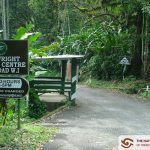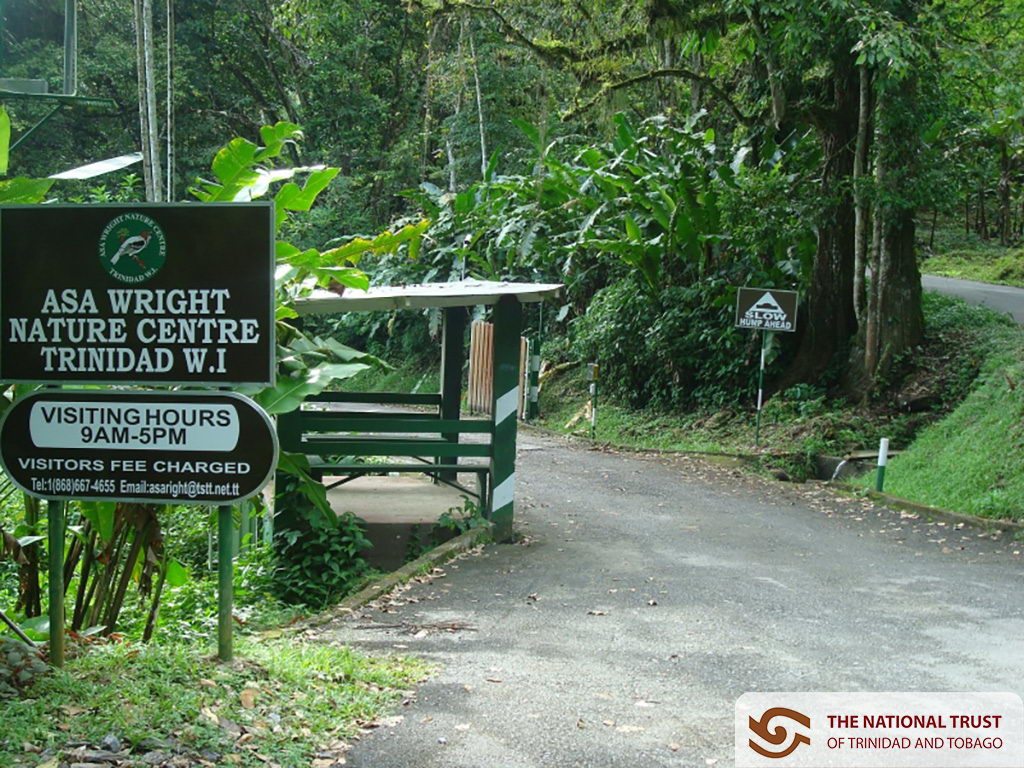
The Asa Wright Nature Centre is a nature resort and scientific research station that was established in 1967 with the aim of protecting part of the Arima Valley in its natural state, safeguarding wildlife, and having a beautiful natural space for the study and enjoyment of local and foreign visitors.
Originally a cocoa estate, approximately 1200 feet in the mountains of the northern range, the area now known as Asa Wright Nature Centre, was originally called Spring Hill Estate. These lands had been carved from the rainforest by its owner, Charles William Meyer whose father, German-born Fredrich Wilhelm Meyer, had purchased the property for him after he expressed interest in becoming a planter. Between 1906 and 1908, the younger Meyer, built a grand house on the estate and exploited the rich soils of the area to grow his produce of mainly cocoa, coffee and citrus.
During the First World War, persons of German ancestry in Trinidad became personae-non-gratae, and most of them were rounded up and taken to Caledonia and Nelson Islands off the northwestern peninsula of Trinidad before accommodations were established at the St James barracks. In addition, many of their properties were seized by the colonial government, including the estate at Spring Hill. The property had likely returned to Meyer following the war, but Spring Hill estate was never able to return to profitability.
Thus, after falling on hard times, the property was reverted to the Agricultural Bank and later sold to Andrew and Marianne Bernard in 1926. Again, the property was reverted to the bank. It was then bought by US couple Joseph and Helen Bruce-Homes in 1936. It is said that they were attracted to the property because of its accessibility to an Oilbird cave. During their period of ownership, the couple renovated the plantation house utilising its previous timber foundation. Their home became a retreat for colonial government officials, Pan Am pilots and other US military officials. Despite their love for their home, the Holmes’ returned to the US after the Second World War.
The estate was then sold to Asa Wright and her ailing husband, Newcombe Wright. Asa Wright, who was the main caretaker of the estate, had continued to allow the grounds to return to forest although some areas were left for the cultivation of coffee, cocoa, and citrus.
In 1949, William Beebe of the New York Zoological Society acquired the adjacent estate, which he named Simla, to be used as a field station for the study of the New World Tropics. While water and electricity connections were being made to his property, Beebe stayed at Springhill as a guest of the Wrights. Beebe’s and Asa Wright’s friendship blossomed into a partnership where bird watchers and scientists from all over the globe would view and study wildlife at the field station and spend their nights at the Wright’s home-cum-inn.
After Newcombe passed away, and as Asa Wright grew older, she struggled to manage the estate. William Beebe also died sometime after and Simla fell into disrepair. This drew the concern of conservationists around the world, and on 22nd December 1967, members of the Florida Audubon Society raised money to purchase Spring Hill. Thereafter, the Asa Wright Nature Centre, a not-profit Trust, was established and run by the Bank of Nova Scotia Trust Co., and an international Board of Management comprising 11 Trinidadians and 10 foreign members. The Trust aimed to permanently protect Spring Hill, develop its agricultural potential in a sustainable and ecologically sensitive manner and continue to facilitate educational and scientific exploration.
Although the property had been sold, Asa Wright continued to live at the Centre until 1971 when she passed away. Not too long afterwards, in 1974, the New York Zoological Society bequeathed the Asa Wright Nature Centre to the Simla Research Center, to become a Tropical Research facility. In total, the facility owns close to 1,500 acres of partly reclaimed secondary forest, surrounded by untouched rainforest in the Arima and Aripo Valleys of the Northern Range. It is home to a variety of wildlife including Red Brocket deer, agouti and ocelot, as well as many bird species such as Oilbird, Ruby-topaz Hummingbird, Tufted Coquette, Great and Barred Antshrikes, Squirrel Cuckoo, Purple and Green Honeycreepers, and Bearded Bellbird.
Address: Spring Hill Estate
Town/City: Arima
Region: Tunapuna – Piarco
Site Type: Mixed Heritage
Website Link: http://asawright.org/
Ownership:
Public Accessibility:
Habitat: Rainforests
Eco-System: Terrestrial
Cultural Community:
Site Features: Private Buildings
Spring Hill Estate, Arima, Tunapuna – Piarco


